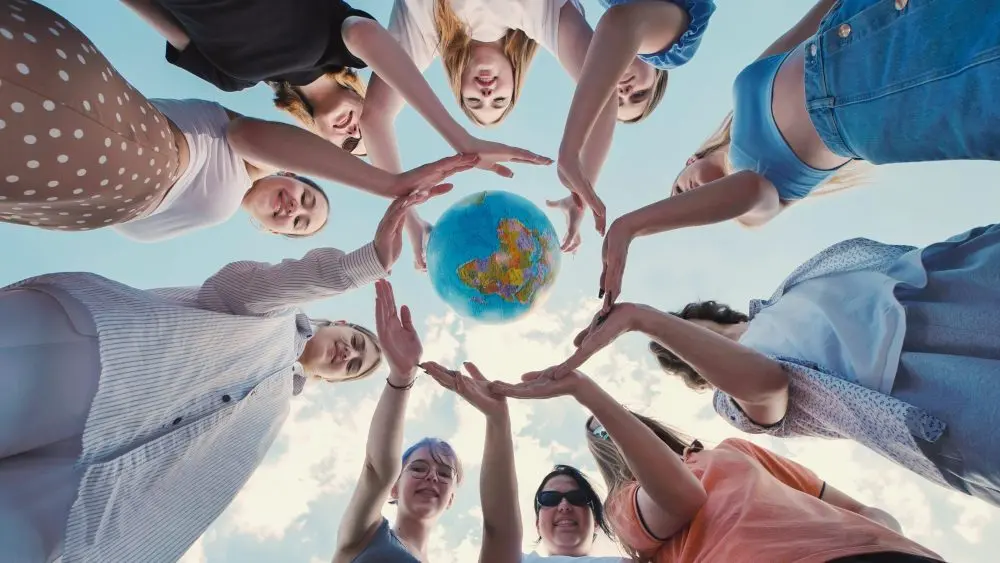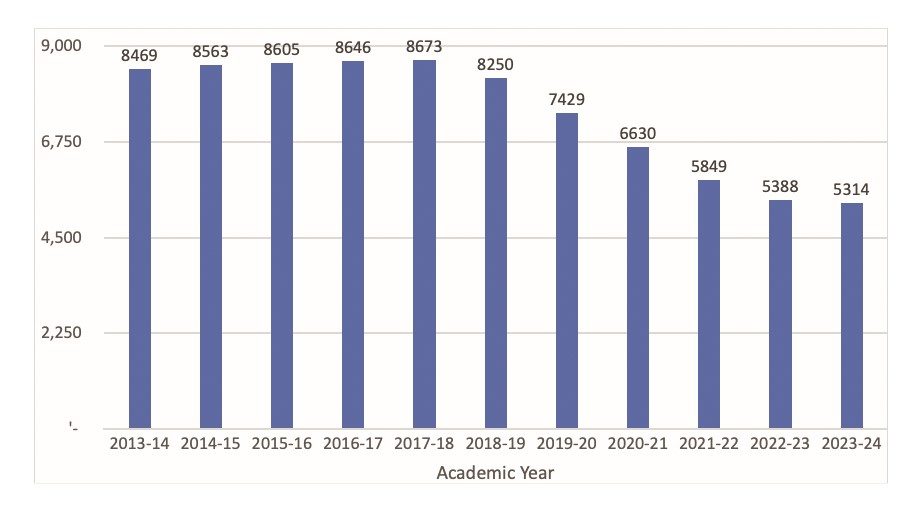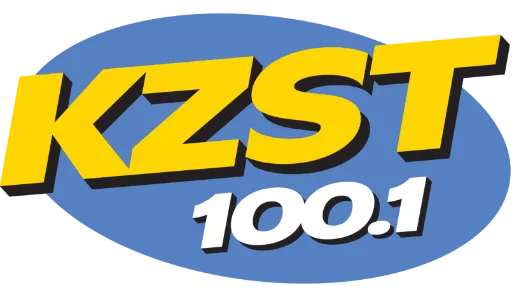
Commencement ceremonies at Sonoma State University in May marked the end of my 30th academic year as a lecturer, professor, program director, government-relations lead and dean at SSU. I was first interviewed for a teaching position at Sonoma State in June 1995. Shortly after I arrived here, SSU began a significant growth period in community engagement and student population, cresting in 2017 and 2018 (see the data in the graph). The Tubbs and associated fires in October 2017 shifted our population on campus and began a downward movement that multiple headwinds have assisted—the pandemic and successive rounds of problematic public relations, for example. There is blame to go around: On-campus (including me), off-campus in the North Bay and beyond, the Chancellor’s Office and in Sacramento. We all could and should have done more.
The following graphic, from the California State University (CSU) system, has become a significant focus on campus and at the CSU Chancellor’s office. In my opinion, this is our critical issue: We need more students. However, we need a globally differentiating set of programs and lifestyle reasons for students to come, stay, and graduate from here. The following data are not the number of students, but the number pursuing full-time study, converting part-time students into full-time students, similar to two part-time workers working 20 hours a week each, becoming one full-time equivalent worker.

Full-time equivalent students, or FTES, are significant metrics in public and private universities regarding the economics of university revenues and creating SSU alumni who advertise why SSU is amazing. We want alums to be positively biased about their experiences. Full-time students generally have been advised and have a plan and path toward graduation; part-time students may be slowly going or returning to higher education when randomly considered. Over the next five years, one of the key debate items on our campus will be: What number of FTES is best for Sonoma State’s financial stability and for the region?
The true challenge is creating reasons why students would want to study here from points across the globe, specifically in the western United States. In many ways, the graph above also underscores a loss of niche and competitiveness: If SSU was differentially attractive as a place to study, would students not come? Headwinds are both local and existential. To reverse that, SSU needs to become a more integrated regional partner, start doing things no other CSU campus is doing, and monopolize that position once established. We need to think like a start-up with some momentum—what becomes of SSU 2.0 is critical to the university’s long-term success and gaining access to global investment in our programs.
If that change works, the surrounding communities are enhanced. Like any employer, every university has economic effects in concentric circles of benefits and costs for the surrounding communities. Generally, economic effects are net positive for universities. This is why communities clamor for universities to appear, expand and find external funding sources. Entire communities can be uplifted as universities grow in size and stature, especially if these communities become integrated partners in retail, student rentals and events.
In the coming months, I will expand on these themes as our Fall 2025 semester begins and my journey on campus continues. A key theme is getting high school, community college and non-traditional students to push Sonoma State toward top-of-wallet, again with a global view on changing student perceptions about what this university offers new and continuing students.
